Many of us still using older and smaller iPhone, iPad, and iPod models struggle with how to free up iPhone and iPad storage on our limited storage devices. Seeing that message “storage almost full” invariably means we need to put some time into trimming the fat of our photos app and taking a look at where else we use that storage. And that process is a pain! So wouldn’t it be great if Apple did the work for us? Well, that’s exactly what Apple’s storage recommendations for iOS and iPadOS does!
Before 2016, baseline iPhones came with 16GB of storage–and at least 4 GB of that was for all the system files! This lack of storage was a common complaint amongst Apple pundits, saying that the 12GB of usable storage wasn’t nearly enough for anyone. Finally in 2016, with its release of the iPhone 7, Apple bumped its entry-level phones to 32GB, doubling storage across the board. And later with iPhone X and 11 Series, doubled that again to 64GB.
But still, with all the things our iPhones now do, 64 GB still isn’t much. And we think Apple listened to customers and critics when developing iOS versions in recent years.
That’s because inside iPadOS and iOS (using iOS 11+,) Apple gives its users options to free up iPhone and iPad Storage–FINALLY!
Related articles
- Dealing with iOS apps that take up way too much storage
- How to Free up iCloud Storage – 5 Essential Tips
- How To Delete Emails Completely from iPhone and Save Storage
- Taking Photo But iPhone Says Storage is Full?
- Free Up iPhone Storage with iOS Tools, Recommendations, & iCloud
- Storage Optimization Features in macOS
- iPhone Storage Full? Tips Managing iMessage Data
- Spring Cleaning Time! Tips to a Clutter-Free iPhone & iPad
Contents
- It’s known and tested
- Free up iPhone and iPad storage: great space-saving features
- Free up space on iPhone, iPad, and iPod without deleting apps by Offloading Apps
- Here’s what Offload App actually does
- Save space by reducing your text message storage
- Wrap up
It’s known and tested
With the introduction of macOS (starting with Sierra and continuing through current versions), Apple released a storage recommendation feature.
It allows users to offload certain files to the iCloud, highlighted any large files they hadn’t accessed in some time so users could pick and choose what to save and what to trash, and also had two great options to reduce clutter and optimize storage.
And Mac users loved it. So starting in iOS 11, Apple’s brought that features to iOS and iPadOS. 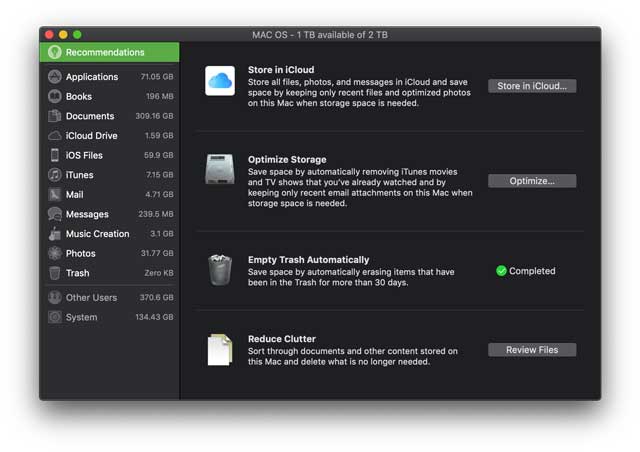
Free up iPhone and iPad storage: great space-saving features
To see these iOS and iPadOS storage features, head into Settings > General > iPhone Storage (or iPad, iPod)

From here you’ll see a few new things.
First, you see a graph breaking down your iPad (or iPhone, iPod) Storage and what’s taking what.
Next, you see Recommendations.
These are specific actions Apple recommends you complete to save space. Some of these include the ability to Auto Delete Old Conversations, Offload Unused Apps, and Review Large Attachments. Depending on how you use your iDevice, you might also see recommendations to Review iTunes Videos and things like Review Large Attachments in Messages.
Below all your recommendations is a list of all your apps and the space they take up on your iDevice.

Free up space on iPhone, iPad, and iPod without deleting apps by Offloading Apps
The best storage-saving trick Apple introduces with iPadOS and iOS 11+ is offloading apps.
Apple finally answered fan requests on how to free up space without deleting anything! So instead of deleting apps, Apple offers to offload them–basically moving apps into the cloud until you want or need them again. Yeah, it’s pretty amazing!
How to free up space without deleting apps
- Again visit Settings > General > iPhone Storage
- Scroll down to the list of app
- Wait for information to populate–sometimes this takes a bit of time
- Review the listed apps. These are arranged by how much storage they are taking and provide you a snapshot of the last time they were used
- If you see an app that looks like it’s taking a lot of space and you haven’t used it in a while, tap on it to show additional information
- Review the information for App Size and Documents & Data
- If the App Size is large, look for the option to Offload App

- Offloading removes the app but keeps any user-inputted data so when you reinstall it, all your data reconnects–like you never removed the app in the first place!
As you see in this example, this app “Wheel” is about 200MB BUT your app Data is less than 1MB (647 KB.) Offloading the App but NOT its Documents & Data is a potentially huge space-saving opportunity.
Here’s what Offload App actually does
Clicking Offload app keeps your data on your device but removes the app. When you go back to your home screen, the icon remains BUT with a little cloud icon next to it. Clicking the app automatically starts a re-download of that app from the App Store.
Once downloaded, your iOS places back in your original data. And it’s like the app never left.

Additionally, iOS 11+ includes an option to allow iPhones to automatically do this for apps that haven’t been used in a significant amount of time.
Save space by reducing your text message storage
Along with these features, there are great features to save space within Messages.
We’ve asked for a way to sync our texts across all our devices, so we don’t have to delete messages over and over again, depending on how many devices are linked to our Apple ID and Message accounts. And Apple listened when it introduced Messages to iCloud.
First, you can save your Messages to iCloud and move the storage burden to your iCloud plan.
- To turn Messages on, go to Settings > iCloud > and toggle on Messages
iMessages in iCloud is a feature that works for all Apple ID synched iDevices and Macs. And once selected, the feature has two main benefits.
Messages in iCloud Benefits
- All of your conversations are on every device and look exactly the same on every device
- So if you delete a text from one device, you remove that text from all your devices at the same time
- New devices automatically add your Message history
- Before this feature, if you got a new device, your iMessage history on that device only starts from when you open the device
- Now, all your devices have your entire Message catalog and sync
- Messages need less space! Great storage optimization potential
- With all your Messages now stored in iMessages in the Cloud, it frees up space on EVERY DEVICE
Or, remove your Message storage manually via message storage recommendations
For folks that don’t want to use iCloud to store their messages, iOS and iPadOS includes a series of tools to save space via messaging.
- To view these tools, head into Settings > General > Storage
- Here, scroll down the app list until you see Messages
- When you open Messages, you see a list of suggestions to clear space within Messages
- The first is Review Large Attachments which lets you go through large attachments to see what you do and don’t need

- The second is Auto Delete Old Messages that you haven’t read in some time–turning this on removes any messages AND attachments sent or received over a year ago

- Turn this feature on AFTER saving any attachments or conversations you want for the future
Wrap up
There never seems to be enough storage on our phones, even with the larger-sized iPhones.
So the tools and techniques that Apple provides in iPadOS and iOS 11+ are very helpful and make saving space on any iDevice a heck of a lot easier.
And for those of us without a lot of storage for all those Messages and their attached images, stickers, and other documents, having Messages in iCloud should make a remarkable difference in your in-house iPhone/iPad storage needs.
For now, learning iOS’techniques to free up iPhone and iPad storage definitely helps us all get a handle on what we want on and off our phones.

Binyamin has been writing about Apple and the tech sector as a whole for over five years.
His work has been featured on Forbes, MacWorld, Giga, MacLife, and more.
Additionally, Goldman is the Founder of BZG, a software development company focusing on Apple devices.
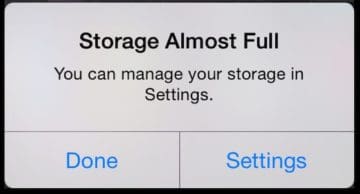
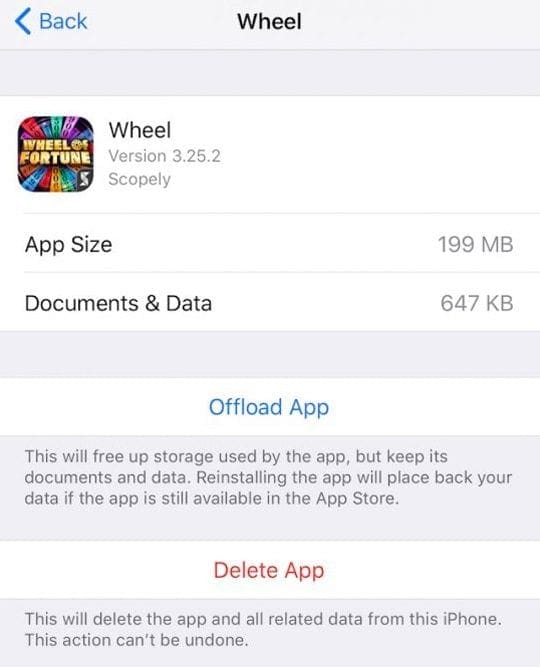
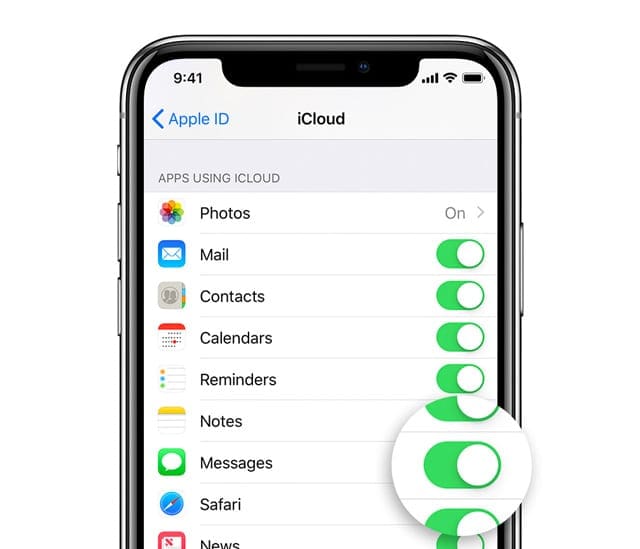

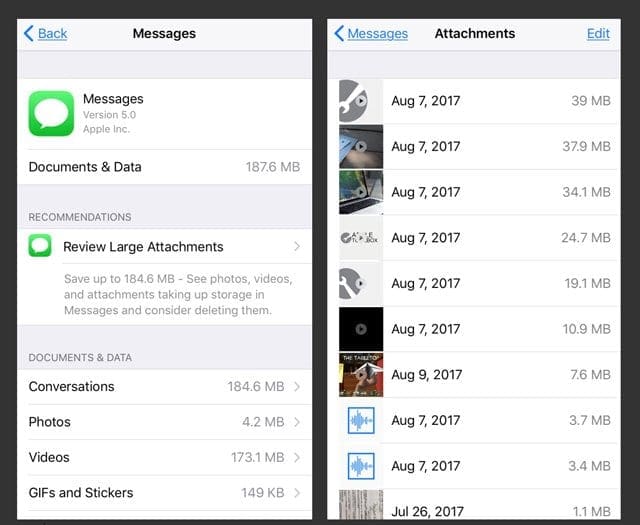
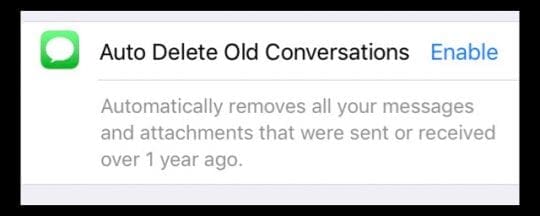

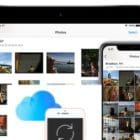
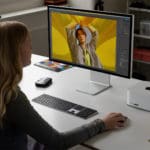







iPhone 6s Plus
I’ve offloaded all Apps, deleted photos don’t have videos . Bought more space on I cloud.
No messages kept on iCloud why am I still getting message my phone is nearly full. I can’t update the software to 15
Used 12.8 from 16 gb
There is no more I can delete
Icloud says I have 200Gb and it’s dull but after deleting photos I only have 130 GB on my iphone. I clould still is trying to make me upgrade to the $10 a month cost. Why doesn’t it sync to the new reality that the photos are gone? I am paying for back up but it is not providing the service.
Make sure you delete the photos in the Photos app Recently Deleted folder as well. If you look at the top, there is a message that even after deleting photos permanently, that it still may take up to 40 days to completely remove them.
It’s possible that this 40-day window is causing your issue.
Nevertheless, it’s a good idea to log into iCloud’s website and see what is in your iCloud account in the web portal. If you see anything there that you don’t want to save and sync with your devices, remove it. For photos and videos, there is also a Recently Deleted folder in the Photos app on iCloud’s website, so make sure you check in there and delete anything. Again, you’ll see that message about the 40 day window.
Hope that helps,
Liz